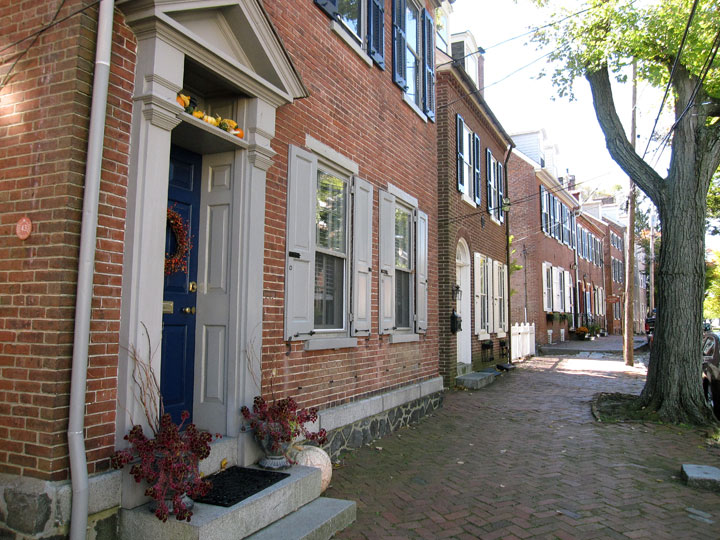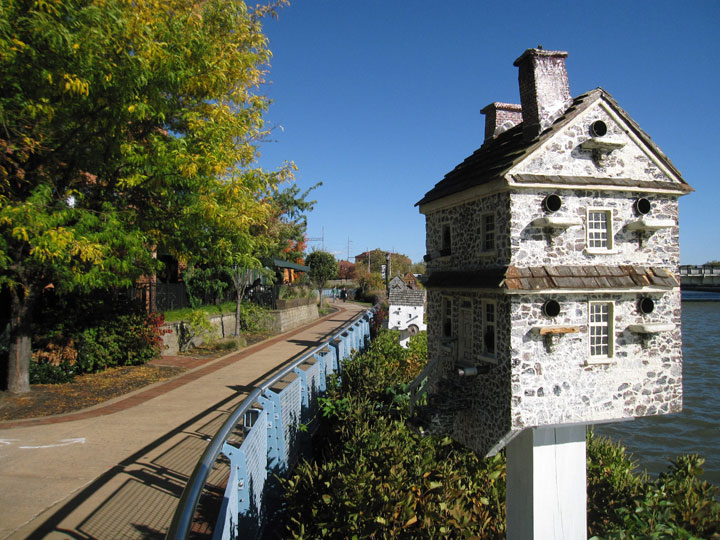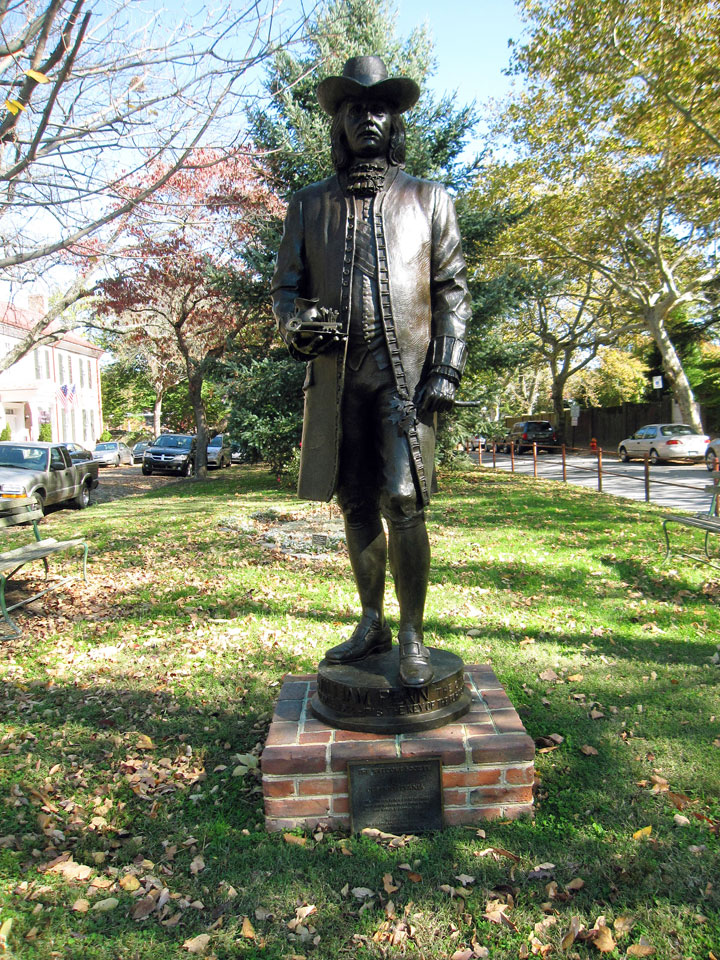WILMINGTON, Del. – The history of Delaware’s largest city, Wilmington, stretches back to 1638, when a Swedish ship, the Kalmar Nyckel, landed with two dozen settlers. Today the area offers not only history but also contemporary art and nature walks along the riverfront. Many of these attractions are also free – an extra bonus for budget-conscious shoppers drawn to Delaware because there’s no sales tax.

RIVERWALK BIRDHOUSES
Wilmington’s Riverwalk is home to a series of birdhouses resembling real houses with elaborate windows, doors, chimneys and siding. They were created by artist Thomas Burke, who drew inspiration from work by the late painter Andrew Wyeth, whose landscapes often depict weathered rural homes. (One birdhouse was inspired by the house in Wyeth’s most famous painting, “Christina’s World.”) The Riverwalk itself along the Christina River offers a lovely meandering stroll with benches, tall reeds and water views, along with signs about local history, including the shipyards that once dominated the waterfront. Start your walk near Harry’s Seafood Grill, located on Market Street near the Amtrak station just past Tubman-Garrett Riverfront Park.
DELAWARE CENTER FOR THE CONTEMPORARY ARTS
This unusual museum has no permanent collection. Instead, it has a half-dozen galleries, each exhibiting the work of a different artist for several months at a time. The museum also hosts artists in studio residencies, with a gallery devoted to showing their work. Current shows include Hiro Sakaguchi’s complex works in various media featuring toys, games and other motifs from the artist’s childhood, along with Dan Jackson’s paintings that draw on traditions of still life, landscape, portraits and Pop Art, often with a playful irony. A painting called “Nightwatch” shows two men armed with flashlights under a starry night sky. The men look stunned, but viewers get no hint of what they see.

Get breaking National news
WILDLIFE REFUGE
The Russell W. Peterson Urban Wildlife Refuge at the end of Delmarva Lane is a waterfront park along the Christina River named for the late Delaware governor who was also an environmentalist and president of the National Audubon Society. His statue can be found near the water’s edge, along with paths for walking, jogging and biking to a pond and through a tidal marsh lined with tall reeds and colorful flowers. Also onsite, the DuPont Environmental Education Center, also free, offers panoramic views and a pedestrian skywalk over train tracks.
OLD NEW CASTLE
A replica of the Swedish ship that brought Delaware’s first colonists can be found in Wilmington at Fort Christina Park, with Old Swedes Church, dating to the 1690s, nearby. But the best place to soak up colonial history is Old New Castle, a 10-minute drive away, which offers a veritable who’s who of colonial history. Peter Stuyvesant landed here in 1655 and took the colony over from the Swedes in the name of the Dutch. Later the colony fell under English rule, and Englishman William Penn first set foot in the New World here in 1682 (later founding Pennsylvania). The Marquis de Lafayette dropped by Old New Castle to officiate at a wedding in 1824.
Notable sites include the riverfront Battery Park; Immanuel Episcopal Church on the Green, which dates to the early 1700s; New Castle Court House, Delaware’s first court and capital; and the Read House and gardens. Various house tours and museums charge fees, but cobblestone streets, shops and tidy brick homes are so evocative of centuries past that just walking around is a lot of fun.
AFRICAN-AMERICAN HISTORY
Wilmington was an important site in African-American history. A sculpture in Tubman-Garrett Riverfront Park memorializes Underground Railroad leader Harriet Tubman, and another marker pays tribute to a white abolitionist, Wilmington businessman and Quaker Thomas Garrett, who helped several thousand slaves escape. Wilmington also had a “reverse Underground Railroad,” in which freed blacks were kidnapped and sold back into slavery, described on another marker near the riverfront west of the South Market Street Bridge. (The movie Twelve Years a Slave was based on a real case of a freed black man, Solomon Northup, kidnapped in New York.) For more stops in the area related to the Underground Railroad, click here.
In Fort Christina Park, near where the Kalmar Nyckel is moored, a marker commemorates Delaware’s first known black settler, Antoni Swart, who arrived in 1639 and eventually was freed. And in 1813, one of America’s oldest black churches was founded in Wilmington, the African Union First Colored Methodist Protestant Church and Connection. A statue of founder Peter Spencer stands near 800 N. French St., and there are two local AUMP churches, Mount Zion, 2801 Jessup St., and Saint James, 1106 E. 16th St.






Comments